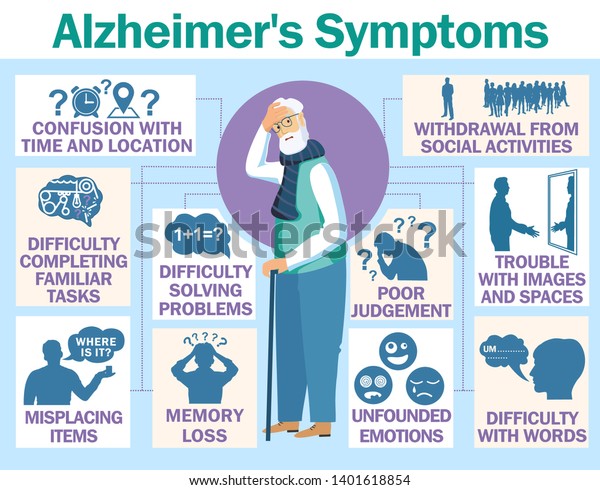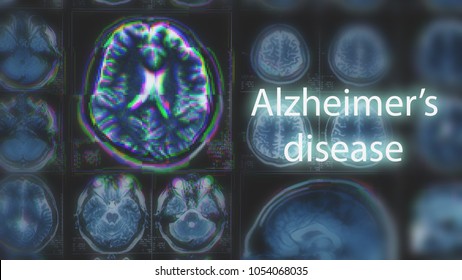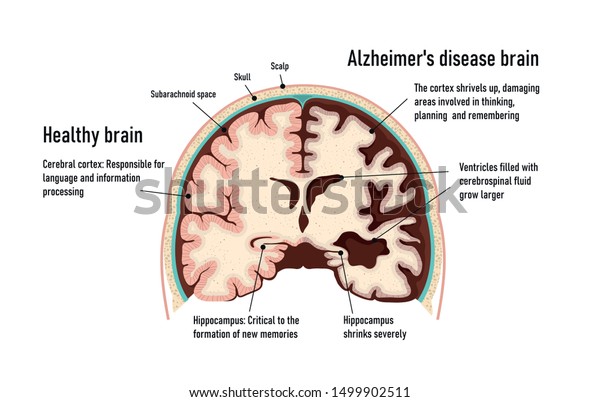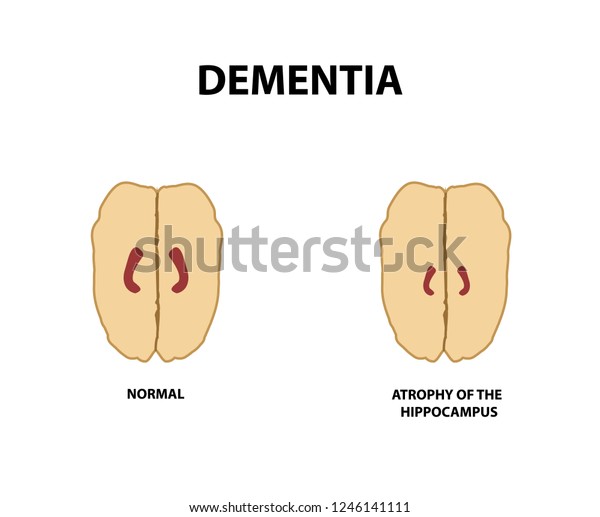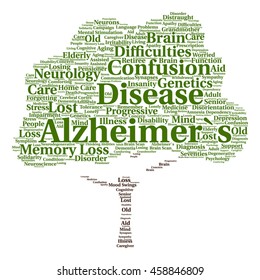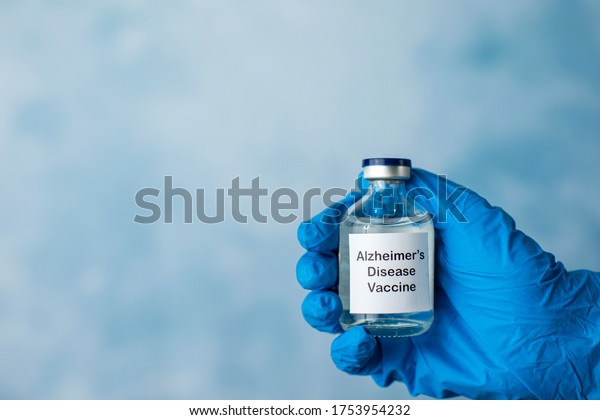Alzheimer’s disease is a neurodegenerative disease that is an underlying cause of dementia in 70% of cases. A person with dementia not only depends upon others (totally or partially) but there are also some other factors such as economic and psychological issues associated with it. Supportive care and medication therapy are used to manage the disease but it can not be reversed.

Etiology of Alzheimer’s disease
Alzheimer’s disease occurs occasionally and irregular circumstances, occurring mostly in the late stage of life (after 60 years). There is no clear cause of this disease.
In a few familial cases, some kind of mutations is the underlying cause of disease. Genetic loci of chromosome 1, 12, 14, 19 and 21 are mostly involved in Alzheimer’s disease. When mutations occur in the precursors of amyloid protein it gives rise to dominant genes that cause Alzheimer’s disease.
What are amyloids?
Amyloids are clusters of proteins having a fibrillar morphology and a secondary structure of β-sheet. They are stained by specific dyes for example Congo red dye. These amyloids are associated with the development of different diseases in human beings.
What are amyloid precursor proteins?
They are large protein molecules that have an important role in the growth and repairing of neurons.
-
However, at some points they can cause harmful effects to nerve cells, which results in Alzheimer’s disease.
-
Sometimes, the normal pathway of processing of these precursor proteins is modified and as a result of it, beta-amyloid starts to be deposited, causing the abnormalities.
-
Studies are being conducted to find any relationship between hormones or exposure to certain metals and Alzheimer’s disease, but there is no significant data regarding the etiology of the disease.
Summary
Amyloids are clusters of fibrillary proteins consisting of amyloid precursors. They have a fibrillary entangles and their accumulation in the brain is the main reason for Alzheimer’s disease.
What are the stages of dementia?
Early stage:
This stage is generally ignored because the disease symptoms are not so striking.
- Forgetfulness and inability to recognize the familiar places are the most common symptoms.
Middle stage:
As disease makes progress and reaches the middle stage, symptoms become clear and can be noted easily.
These signs and symptoms are
-
Forgetting names of people, also the near ones
-
Not remembering anything about the events happened recently
-
Losing path even in own house
-
Difficult conversations
-
Striking changes in behavioral patterns
Late stage:
At this stage, the patient nearly becomes dependent and inactive. There is a serious loss in memory and the patient is not even able to recognize the relatives and family members. Sometimes behavioral change becomes so severe that the patient starts behaving aggressively.
Summary
Alzheimer’s disease worsens with time with mild signs and symptoms at initial stage. With each stage, symptoms become severe finally resulting into complete memory loss in the end stage of disease.

What is the Pathophysiology of Alzheimer’s disease?
There are two important pathological factors contributing to the development of Alzheimer’s disease
- Deposition of beta-amyloid in the grey matter of the brain
- Formation of neurofibrillary tangles (knots of brain cells)
- Loss of cortical cholinergic neurons
All these factors lead to the degeneration of nerve cells, causing alterations in the internal structure of the brain mainly in the temporal lobe. The actual mechanism by which amyloid plaques and neurofibrillary tangles cause the deterioration is not clear.
What are the signs and symptoms of Alzheimer’s disease?
The most apparent sign of Alzheimer’s disease is dementia. Dementia is the sophisticated term used in the place of forgetfulness
- First and foremost, a symptom of Alzheimer’s disease is Short term memory loss.
- Several problems related to cognition (e.g. loss of reasoning, weak judgment)
- Speaking and writing difficulties
- Inability to recognize a face or a person
- Several moods disorder
How can Alzheimer’s disease be diagnosed?
-
To diagnose Alzheimer’s disease following factors are considered:
-
Examination of the mental status.
-
Patient’s history and physical examination
-
Detection of cognitive issues
-
Brain imaging
-
Lab testing
The final diagnosis is made according to the histologic testing of brain tissues.
What are the treatment options for Alzheimer’s disease?
Two types of treatment options are necessary for Alzheimer’s patients
- Supportive therapy
- Medication therapy
Supportive therapy:
Patients with Alzheimer’s disease (and all other dementias) require some general measures to make the patient feel better.
For example:
- Surroundings should be bright and familiar to the patient
- As the patient is unable to keep the track of time, the wall clocks and calendars should be placed in a way to make them clearly visible.
- Family members or nurses should be around the patient to help him/her anyway.
Medication therapy:
Recent therapeutic protocols are aimed to act in two ways. Either there should be improved cholinergic transmission in the central nervous system. Or it should inhibit the excitatory actions occurring due to excessive stimulation of NMDA receptors in certain brain areas.
Patients with Alzheimer’s disease are provided with palliative care just to control the symptoms. Degenerated neurons, however, can’t be recovered and hence disease can’t be reversed to attain the normal physiology of the brain.
Acetylcholinesterase inhibitors
Various studies have shown that there is some correlation between the degeneration of cholinergic neurons inside the brain along with loss of transmission and the memory loss that is the identity of Alzheimer’s disease.
Acetylcholinesterase is the enzyme that causes the breakdown of acetylcholine, a neurotransmitter at cholinergic neurons.
It is considered that if AChE is inhibited, there will be improved cholinergic transmission at functional neurons. Reversible cholinesterase inhibitors include the following agents:
-
Donepezil
-
Galantamine
-
Rivastigmine
They are comparatively more selective in CNS than the peripheral cholinergic neurons. They act in the best possible way to reduce the cognitive loss of Alzheimer’s patients. At best, these compounds provide a modest reduction in the rate of loss of cognitive functioning in Alzheimer patients
However, they are associated with some adverse effects including tremors, slow heart rate, and cramps in muscles
NMDA receptor antagonist
N-methyl-D-aspartate receptors or NMDA receptors are glutamate receptors and are important for the maintenance of synapsis and memory
Their stimulation is necessary for making memories. However, when they are excessively stimulated, they may cause neurodegeneration and apoptosis in the brain.
One of the important NMDA receptor blockers is Memantine that is used for managing moderate to severe Alzheimer’s disease.
It acts to limit the influx of Calcium ions into the neurons by blocking NMDA receptors. Hence calcium ions do not reach a toxic level and neurodegeneration is prevented.
Like anticholinesterases, memantine is also associated with some side effects. These side effects include:
- Confusion
- Agitation
- Restlessness
Summary
Alzheimer’s disease can’t be treated completely. However, to control the symptoms, treatment options for Alzheimer’s disease are acetylcholinesterase inhibitors and NMDA receptor antagonists. But they can manage the symptoms, as Alzheimer’s disease is irreversible.

How can Alzheimer’s disease be prevented?
Prevention is always better than cure. Alzheimer’s disease can also be prevented by making the following activities a daily routine
Continuous mental exercises for example puzzle-solving, keep learning new things even at a later age.
- Doing physical exercises
- Trying to maintain blood pressure
- Avoiding cholesterol-rich food
- Lowering cholesterol levels
- Avoiding alcohol (especially after the diagnosis of early dementia as can worsen the disease)
Frequently asked questions
1. Are Alzheimer’s disease and Dementia the alternate terms?
The simple answer is “No”. Alzheimer’s disease always represents itself in the form of dementia. But dementia does not solely occur because of Alzheimer’s disease. There are other types of dementia that do not have Alzheimer’s disease as an underlying cause.
2. What are the types of dementia?
Alzheimer’s disease
This occurs because of neurodegeneration and is the cause of 70% of dementias.
Vascular dementia
This is the second most common kind of dementia and occurs because of damage to blood vessels that supply the brain. This damage can result in stroke and damage to the white matter of the brain.
Lewy body dementia
Lewy bodies are an abnormal accumulation of proteins in the form of agglomerates in the brain. This agglomeration is the cause of dementia.
Frontotemporal dementia
This type of dementia is caused by neurodegeneration in the areas of the frontal and temporal lobe of the brain. These areas are associated with the personality making, speaking, and behavior of a person.
Mixed type of dementia
A combination of all causes of dementias including Alzheimer’s disease, Lewy bodies, and vascular problems can cause a mixed type of dementia.
3. What is the main cause of Alzheimer’s disease?
Alzheimer’s disease is caused by the abnormal agglomeration of some special type of proteins known as amyloid proteins within the brain.
Sometimes, they form plaques in the brain. This protein deposition and plaques cause the breakdown of nerve cells.
4.How does peanut butter is used to detect Alzheimer’s disease?
Losing the sense of smell is a characteristic of Alzheimer’s disease. So, the peanut butter test is an important test to diagnose Alzheimer’s disease. In this test, the patient is asked to smell the peanut butter by both nostrils. If the patient is not able to smell it, then it shows that patient is suffering from Alzheimer’s disease because studies suggest that Alzheimer’s patients can’t smell peanut butter.
5. How can we care for a dementia patient?
Aggression is characteristic of Alzheimer’s disease or dementia during the late stages. Other than dementia, there are several other diseases that make elderly patients more irritated. So, patients should be dealt with extra care. They need extra attention and love. Listen to them with all your heart. Do not get irritated for their repeated questions as they have lost their memory. Try to give them company, more often than a normal elderly.
Conclusion
Alzheimer’s disease is the major cause of dementia. It mostly occurs in the late stage of life and is often irreversible. Supportive therapy and medications can be used to prevent the signs and symptoms of Alzheimer’s disease. Acetylcholinesterase inhibitors and NMDA receptors antagonists are used in the therapy of Alzheimer’s disease.
References
What is Alzheimer's Disease? Symptoms & Causes | alz.org.
Alzheimer's disease - Symptoms and causes - Mayo Clinic
What are Alzheimer’s Plaques and Tangles? | BrightFocus Foundation.

